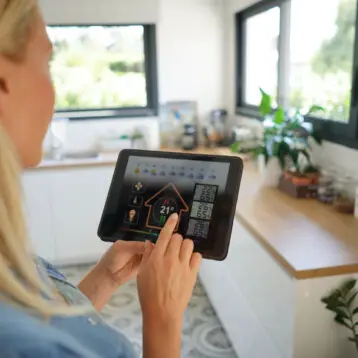Blue H Technologies recently announced it plans to install a test turbine off the coast of Massachusetts. A full floating wind farm is currently under construction off the Italian coast. If the floating wind-farms prove to be efficient, they will allow us to exploit a resource of an immense scale. For example, according to a 2006 analysis by the U.S. Department of Energy, General Electric, and the Massachusetts Technology Collaborative, offshore wind resources on the Atlantic and Pacific coasts exceed the current electricity generation of the entire U.S. power industry.
Hopefully, the new floating turbine will enhance the exploitation of these offshore wind resources. According to Emerging Energy Research, a consultancy company based in Cambridge, MA, by 2020 the global market for offshore wind energy could reach 40,000 megawatts, which is enough electricity to power more than 30 million U.S. homes and more than twice the energy produced by wind installations worldwide in 2007. Building enough farms to generate this power will require an expanded marine construction capacity. Currently, wind farms such as those installed off the coasts of Denmark, Germany, and in other European waters suffer from a limited supply of marine construction equipment, such as pile drivers and cranes. Building turbines to generate even 2,000 megawatts of offshore wind power over the next five years will require a significant increase in the marine supply chain, and the total balance is not necessarily in favor of the environment.
Floating turbines can be assembled onshore and towed into position, minimizing the significance of the offshore construction bottleneck. The platform that Blue H towed out of Brindisi Harbor in Puglia, Italy, last winter is called a tension-leg platform. It is based on a conventional offshore oil and gas platform design: it floats below the surface, and is held rigidly in place by chains running to steel or concrete anchors on the seabed. An 80-kilowatt wind turbine is installed on top of the platform, fitted with sensors to record the wave and wind forces experienced 10 kilometers offshore. According to Blue H, significantly larger floating platform models, with 2.5-megawatt and 3.5-megawatt turbines, are currently under construction and could be installed already this fall.
Blue H Technology’s design is unique due to the two-bladed rotor of the turbine, a design that lost out to the three-blade design in the 1990s as the wind-turbine industry scaled up. Martin Jakubowski, Blue H Co-Founder and Chief Technology Officer, explains that the noise and jarringly high rotation speeds that made the two-blade rotor a bad model on land are either irrelevant or a plus offshore. Faster rotation offers further benefits: the 30-to-35-revolutions-per-minute frequency, which is twice than that of a three-bladed turbine, is less susceptible to interference from the back-and-forth swing of the platform under wave action. This helps keep the whole construction stable.
Other green-energy projects covered by TFOT include the World’s Largest Tidal Power Plant, which will be built in Korea, and the Ocean Thermal Energy Conversion technology, that may enable the establishment of an efficient energy storage system across the world, supplying enough energy for our entire planet. TFOT also reported on technologies for generating energy from sea tide, developed by Verdant Power and Pelamis Wave Power.
For more information about Blue H Technologies’ new development, see their website.










